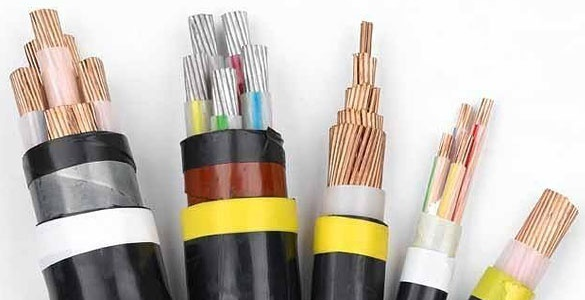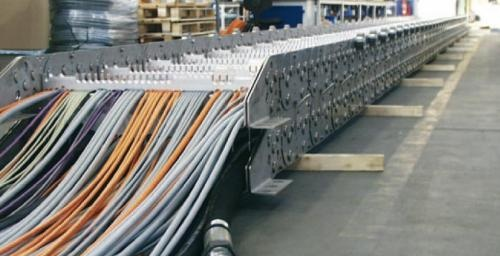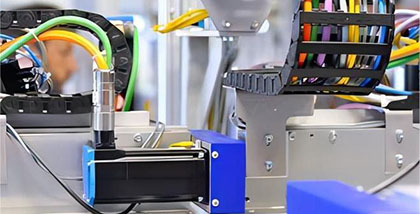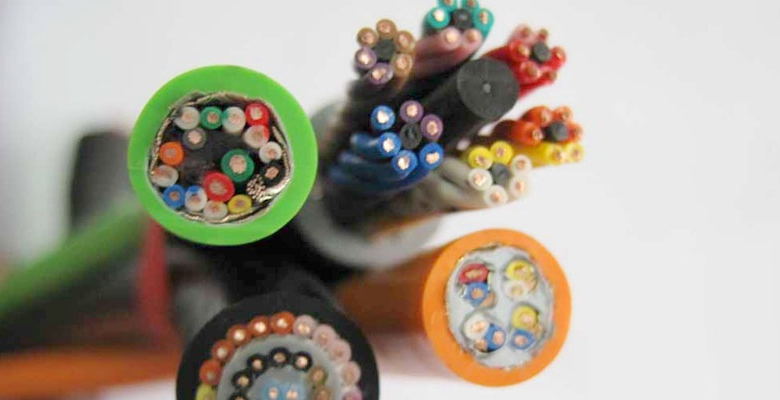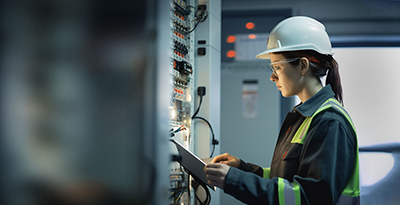Do you know about the protective measures for the use of wires and cables?
Precis
A cable is usually a rope like cable composed of several or groups of wires (at least two in each group) twisted together, with each group of wires insulated from each other and often twisted around a center, with a highly insulated covering layer on the entire outer surface. It is often installed in the air or underground or underwater for telecommunications or power transmission. Cables can be divided into power cables, communication cables, and control cables according to their purpose.
There are many types of wires and cables, and the quality of various cables in the market varies. Their quality directly affects the quality of engineering and the safety of consumers' lives and property.
So, are there any safety requirements when using cables? What are its protective measures? How to store it?
1、 Safety requirements
When the cables cross each other, the high-voltage cables should be below the low-voltage cables. If one of the cables is protected by pipes or separated by partitions within a range of 1 meter before and after the intersection, the minimum allowable distance is 0.25m.
2. When cables are close to or cross thermal pipelines, if insulation measures are taken, the minimum distances for parallel and cross are 0.5m and 0.25m respectively.
3. When cables intersect with railways or roads, they should be protected through pipes, which should extend 2 meters beyond the track or road surface.
4. The distance between the cable and the building foundation should ensure that the cable is buried outside the building's apron; When cables are introduced into buildings, they should be protected through conduit, and the protective conduit should also extend beyond the building's apron.
5. The distance between cables directly buried underground and the grounding of general grounding devices should be 0.25~0.5m; The burial depth of cables directly buried underground should generally not be less than 0.7m and should be buried under the frozen soil layer.
2、 Protective measures
With the rapid development of underground power cable laying engineering, higher requirements are put forward for cable protection. The cable protection sleeve is made of polyethylene PE and high-quality steel pipes through sandblasting, shot blasting, impregnation or coating, and heating curing processes.
This is the most commonly used type of electrical insulation pipe for protecting wires and cables. Due to its excellent insulation performance, high chemical stability, non rusting, non aging, and adaptability to harsh environments, it has been widely used.
The use of cable protective sleeves to protect cables can achieve the following advantages:
1. Good corrosion resistance, long service life, suitable for use in humid saline alkali areas.
2. It has good flame retardancy and heat resistance, and can be used for a long time at a high temperature of 130 degrees without deformation. It does not burn when exposed to fire.
3. High strength and stiffness. Used for direct burial under traffic lanes without the need for concrete protection layer, it can accelerate the construction progress of cable projects.
4. Cable protective sleeves, whether in pipes or fittings, have a certain degree of flexibility and can withstand damage caused by external heavy pressure and foundation settlement.
5. It has good resistance to external signal interference.
6. The inner wall is smooth and does not scratch the cable. The design adopts a socket type connection method, which is convenient for installation and connection. Adding a rubber sealing ring at the joint not only adapts to thermal expansion and contraction, but also prevents mud and sand from entering.
3、 Storage method
1. Under the eaves. Standard LAN cables can only be used when not directly exposed to sunlight or ultra-high temperatures, and it is recommended to use pipes.
2. On the exterior wall. Avoid direct sunlight on walls and human damage.
3. In the pipeline (plastic or metal). If in the pipeline, pay attention to the damage of plastic pipes and the thermal conductivity of metal pipes.
4. Suspended applications/overhead cables. Consider the sagging and pressure of the cable, which bundling method is planned, and whether the cable is directly exposed to sunlight.
5. Directly laying in underground cable trenches, this environment has the smallest control range. The installation of cable trenches should be regularly inspected for dryness or humidity.
6. Underground pipelines. For the convenience of future upgrades, cable replacement and isolation from surface pressure and surrounding environment, auxiliary pipelines are a better method. But don't expect the pipeline to remain dry forever, as this will affect the selection of cable types.
4、 Supplementary matters
To store cables for a long time, it is necessary to avoid contact with acids, alkalis, and mineral oils.
2. It is strictly prohibited to have gas with harmful cables (tinned or bare copper wire) in the warehouse where wires and cables are stored.
3. Cables should be stored in a regular manner, according to specifications and delivery time, in order to facilitate the safe storage of cables. The cable should be used within one and a half years from the factory date, and if it cannot be completed, it must not be stored for more than two years.
4. Due to the varying degrees of compression and hardness of the protective sleeve during the storage process, cables should be regularly rolled during storage (once every 3 months in summer, and can be extended as appropriate in other seasons). During the rolling process, in order to avoid moisture, the storage tray should be stored downwards and flipped upwards. After rolling, it is necessary to check whether the wires are intact and undamaged.
5. The transportation of wires is also crucial for the storage and protection of wires. It is strictly prohibited to throw cable reels from high places during transportation, as this may greatly lead to insulation and sheath cracking.
During the storage process of cables, it is strictly prohibited to lay them flat, otherwise there may be some wear on the insulation layer or protective sleeve. It can be imagined that if the bare stranded wire is damaged, it will be even more serious. And if the cables are laid flat, resulting in disorderly arrangement, it will inevitably affect the quality of the wires to a certain extent.


 JD
JD Tmall
Tmall Alibaba
Alibaba
